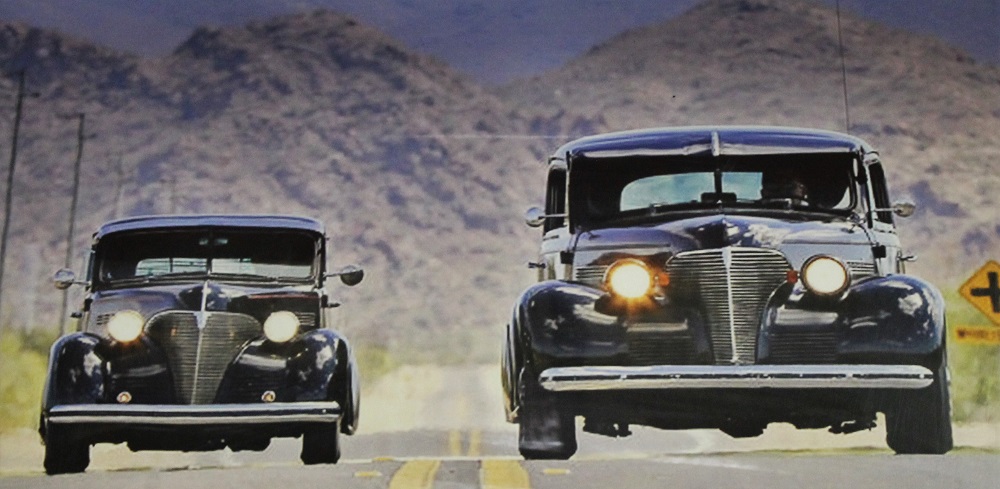
Ernie Adams grew up near a landfill in Harvard, Nebraska. Around the age of 13, he remembers looking out the window of his home and noticing an old refrigerator in the weeds. “It had a black tire swing laying by it and, to me, it looked like a black fender on a white touring car, but miniature.”
Years later, Adams was married, wanted an antique car but couldn’t afford one. And, he said, “We lived in a trailer space and I didn’t have the room for one.”
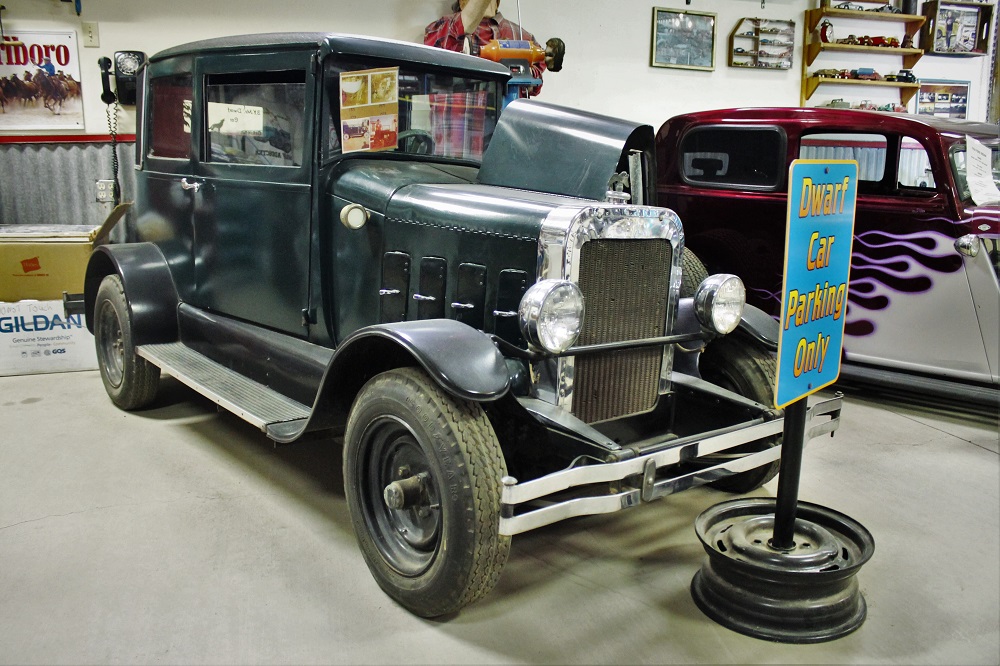
So, with that childhood memory still in mind, Adams decided to build his own a smaller version of an antique car. What he now calls “Grampa Dwarf” is a replica of a 1928 Chevrolet 2-door sedan constructed with the steel from nine refrigerators cut in pieces with a homemade hacksaw. A chair frame, hammer and chisel and other metal scraps also were involved. Adams did not know how to form compound bends, so he used the various curves of the refrigerator steel, learning how to fold the edges and fuse them with an arc welder.
Originally designed back in 1965 as a touring car with solid rubber tires, the scale version of the ’28 Chevy was powered by an 18 horsepower Wisconsin motor. However, in the late ‘70s, Adams added a vinyl top, 12-inch pneumatic tires and a 2-cylinder, 13-horse, Onan motor. The build also features bucket seats, cloth interior and operational windows.
The Chevy was the first of seven street-legal but scaled-down replicas of various classic cars that Adams called dwarf car cruisers, all of which can be seen his his shop-turned-museum on the outskirts of Maricopa, Arizona.
“People call me a genius and I tell them I’m not,” Adams said as he looked fondly at his latest creation, a 1940 Mercury 2-door cruiser with a chop top, built to an 11/16 scale.
“I will point to a full-size car and be like, ‘there had to be someone smarter than me to build it in the first place,’ and they did. I just recreate.”
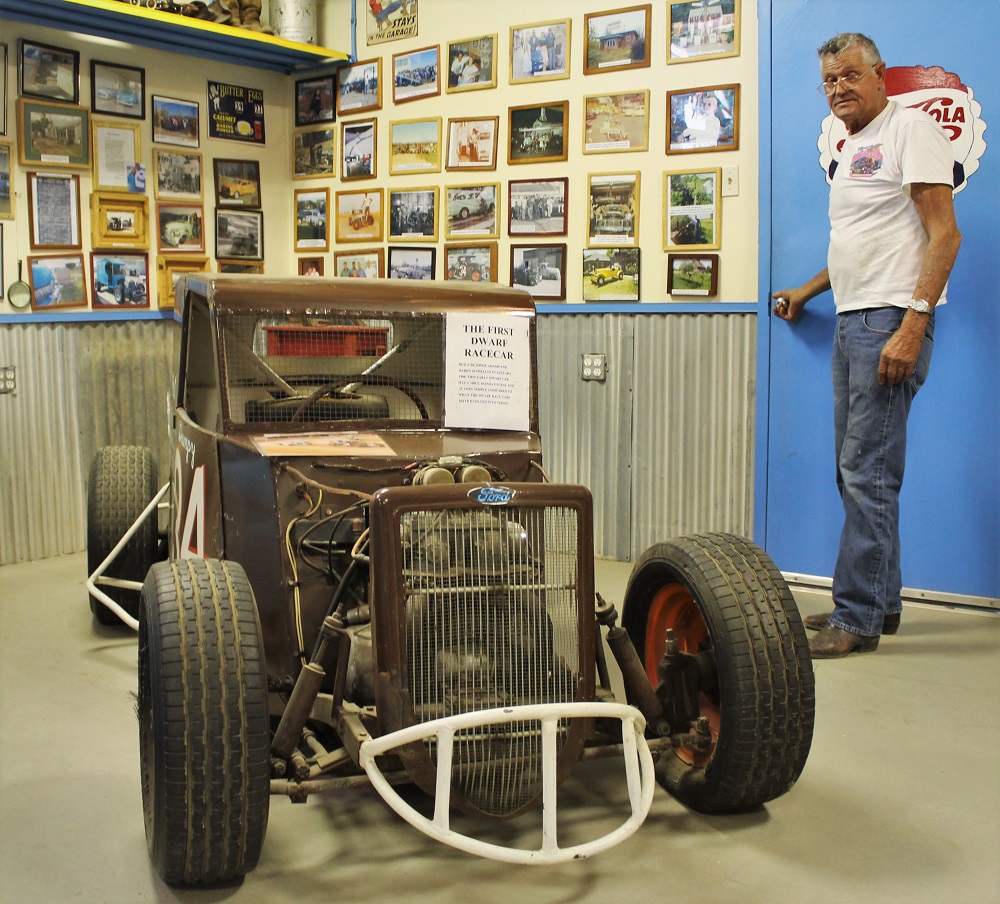
But Adams has been creative. He was the creator of the Dwarf and Legends racing cars.
Adams was driving home from watching motorcycle side hack races at Phoenix International Raceway but wasn’t satisfied with what he’d seen. “When they come up to the corner, they have to slow down so much to keep from tipping.”
“I said ‘man, if they just put a car body on it with the motorcycle engine and slide them corners…’”
Adams said some of his friends agreed and one said that if Adams built one, so would he. Adams based his mini racer off a 1934 Ford coupe, with a 350cc Honda engine. That was in 1980. Three years later, 12 cars competed in the first official dwarf car race.
“I wasn’t trying to start anything. I just wanted to make something in my backyard, and before you knew it, people started wanting them, I sold thousands of them,” Adams said of the creation of the Dwarf Car Company.
“The racing game was going bananas. People wanted to put more money into the cars and make them go faster and they wanted to do things on their own,” Adams said of his decision to leave the company he’d started and instead build scaled-down cars for the street instead of the track.
He began building a scale replica of a 1939 Chevrolet sedan.
“Instead of going to the race track or working on everybody’s cars all the time, I wanted to go to a car show and sit, relax, show my car, and drive it home,” he said.
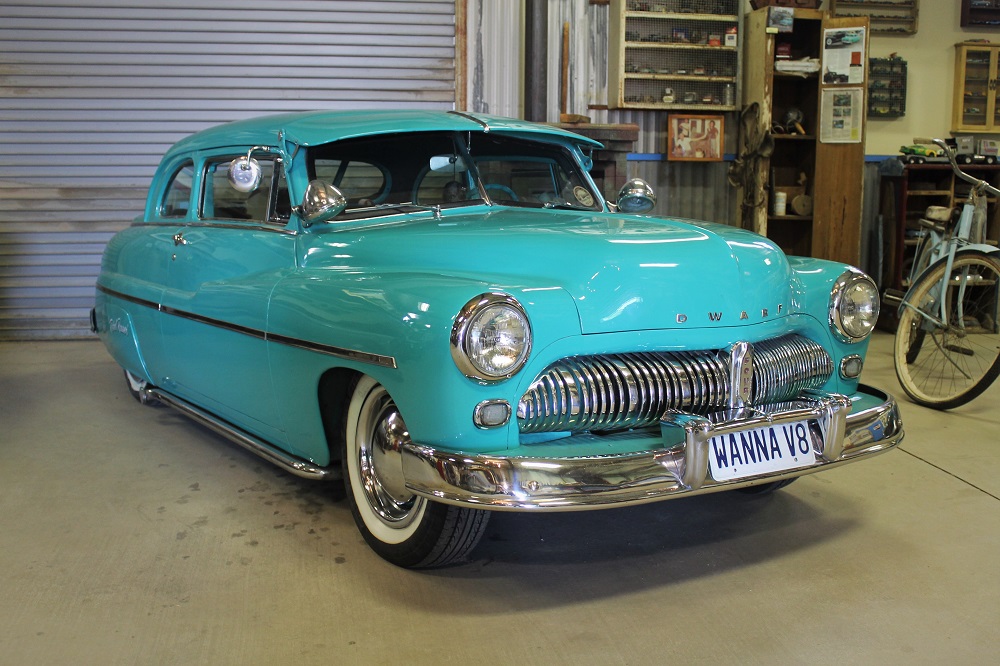
The Chevy uses a 1972 Toyota drivetrain but all other components were fabricated by Adams using a wire-feed welder. He put together a few homemade benders along with a bead roller. The car has been on the road for over16 years and has been driven over 54,000 miles to date.
In addition to the 1928 Grandpa Dwarf car, 1939 Chevy Sedan, and 1949 Mercury 2-door choptop cruiser, the museum has a 1942 Ford convertible, 1929 “Hillbilly: Ford Model A, 1949 Mercury, and a 1934 Ford sedan.
With some exceptions, each car is built to approximately 11/16 scale with an 80-inch wheelbase with 12-inch wheels. “In real life, that Mercury choptop was built with big Cadillac hub caps and it was just a bigger car,” Adams said. “So I used 13-inch wheels and changed the wheel base to 82 inches.”
Adams does the bodys from flat sheetmetal and shapes it into everything from body panels to headlamp bezels. He also does the frames and suspension components. Friends or relatives help with painting and upholstery.
“I have been building cars and repairing cars my whole life, and when I build them, I build them with the idea that I am going to be cruising down the road at 80 miles per hour.” Adams said, adding “I pretty much see that they are safe and reliable.”
Adams says each car takes him approximately five years to build each car at a cost of around $5,000.
“So it’s about a grand a year and that’s not too bad for a hobby.”
Each car is titled and insured.
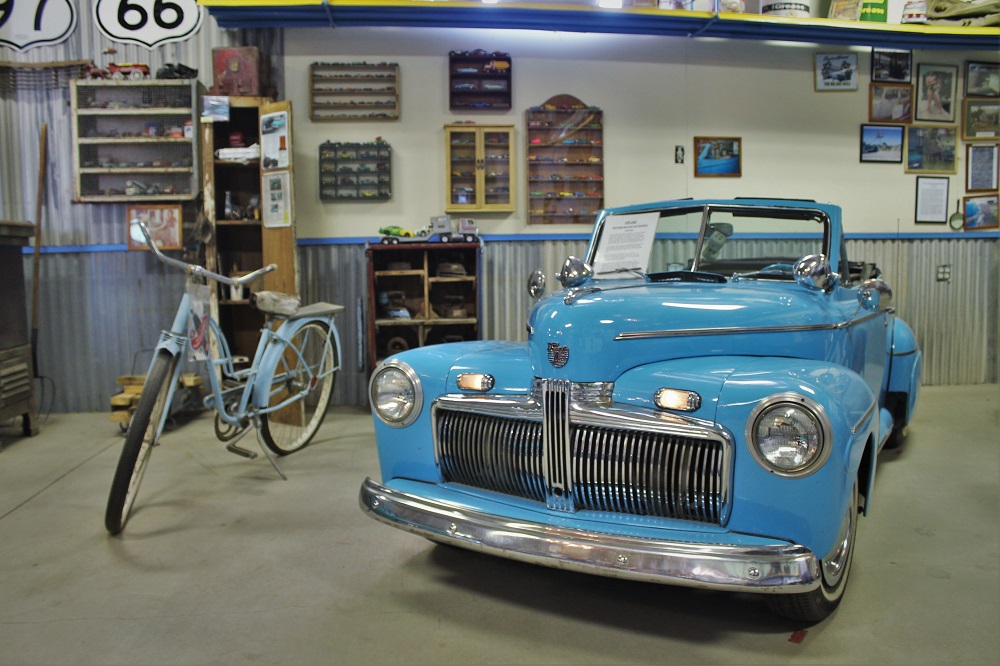
“We keep all the receipts for everything,” he explained. “In a level one inspection, the MVD will photograph half the receipts and that becomes the cars tax value. The level two is when they check to see if you used any body parts on it that came from another car, that’s why I take a lot of pictures of the build process.”
Adams said some people get upset when he declines offers to sell any of his creations.
“Once a guy offered me $60,000 for my other Mercury, he questioned why I wouldn’t take the money and I was like ‘what am I going to do with 60 grand, take it to a car show and be like, look what I got?’ I’d rather enjoy the car.”
The Dwarf Car Museum is registered as a non-profit facility. It was created in part by Adams’ three sons, who asked their father what his wishes were for the cars when he passes.
“I told them I didn’t know, sell them and take the money. But they told me they had talked it over and wanted to keep the cars together in the back of my shop.”
Admission is free but donations are accepted. Adams said total donations go toward the upkeep of the cars, have been used to add restrooms and to pay the electric bill.
The museum is open year round from 9 a.m. to 4 p.m., but people will stop by after dinner if they see the lights on.
“I consider myself a hobbyist,” Adams said. “People tell me how great it is that I do what I do, but I tell them it’s not great. I just do what I do.”
Nicole James photos









































Please thank Nichole James for her photography, I really enjoyed the article also on Ernie Adams! ~Dean Sease
That guy is really talented . Beautiful work .
Very talented and self-taught really makes this story special. To be that creative is impressive. Where is his museum located? I didn’t see any reference to a website, city or state. If anyone knows, please post the location. Thanks in advance, Dean Prevolos.
Loved the story of Ernie Adams and his love for cars. also the way he recreated these cars. I`m proud that his sons have agreed to keep the collection.
Thoroughly enjoyed the article on Ernie Adams and the “Grandpa Dwarf” cars in Maricopa, Arizona. Could I possibly get an address on his museum to go visit?
I have been there with our car club. Believe me it is well worth the trip.
al